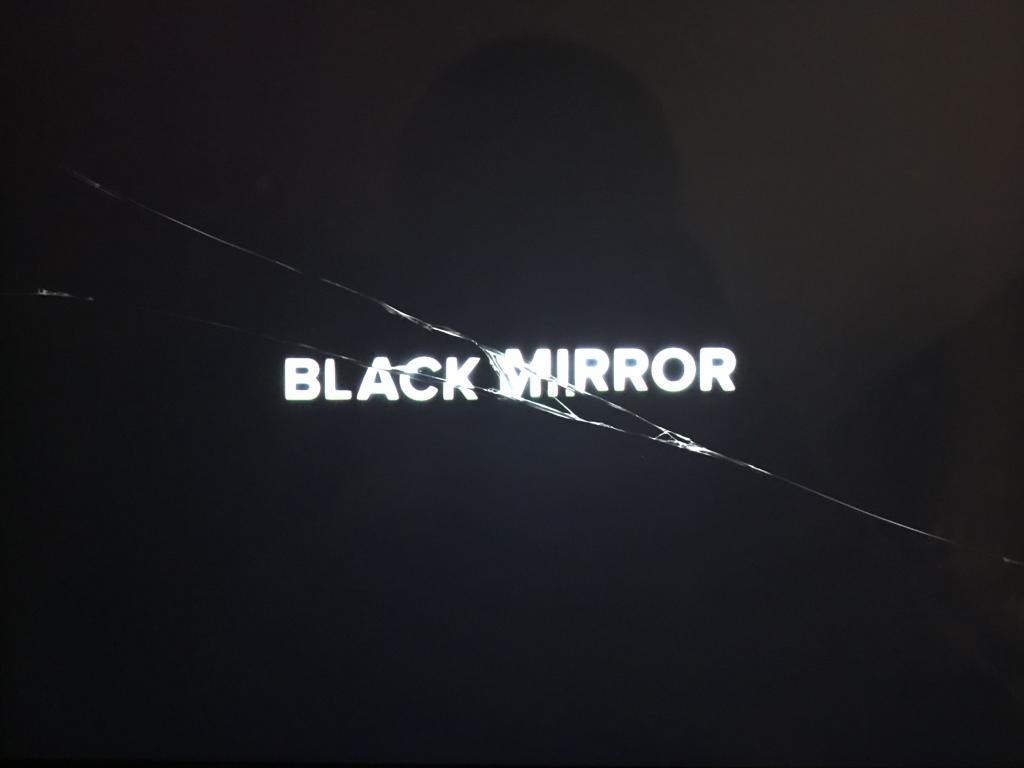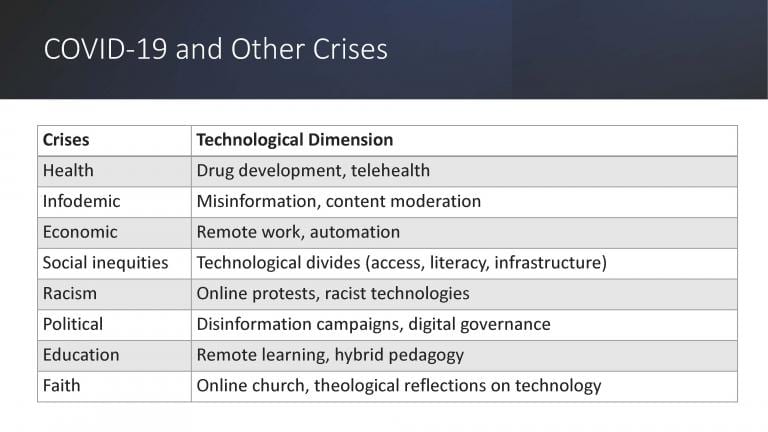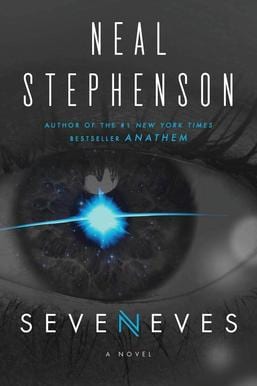Earlier this year, in a post at NPR’s “All Tech Considered” blog (which ended last month), Laura Sydell contrasts the optimism of Vint Cerf with the pessimism of William Gibson.
Cerf, “the father of the internet,” admits “all that dark stuff”—cybercrime, cyberespionage, cyberbullying, et cetera—“never crossed his mind” in the 1980s. Gibson, however, the science fiction writer who gave us the term “cyberspace,” was able to imagine the coming internet as a rather dark place. Sydell claims that those developing new technologies are “focused almost exclusively on how their devices will be used by individuals—not how those devices will change society.” Science fiction, she concludes, can help us think about broader impacts. Cerf himself says he enjoys science fiction because it teaches him “that when you’re inventing something you should try to think about what the consequences might be.”
Looking for a contemporary science fiction critique of new technologies, Sydell considers Black Mirror, an anthology series originally created for British television and now produced by Netflix. Charlie Brooker, the creator of the show, views new technologies as untested drugs “waiting to launch us on a very bad trip.” So each episode functions as a thought experiment: What happens when “common human behaviors and desires” meet a new technology?
Dark stuff happens. But the sensationalistic formula for most Black Mirror episodes—a clever technology enables extremely bad behavior—tends to conceal the moral banality of the show. We are exposed to vice so that we might desire virtue, but we aren’t helped much in exploring the thoughts or motivations that underlie both.
Deadly Thoughts
In the fourth century, the monastic scholar Evagrius Ponticus codified desert hermits’ insights into common temptations and identified eight deadly thoughts. These thoughts may lead to sins, but by focusing on what stimulates disruptive desires we can cultivate disciplines and practices that prevent us from becoming distracted by such passions.
As Diogenes Allen observes, “These passions are easily aroused, and we are so constantly distracted in our struggle with them that we are unable to be attentive to others or to grow in our awareness of God’s presence.” But as we “make the effort to become virtuous, and meet with some success, it becomes easier for us to love our neighbors and God because we suffer from fewer distractions.”
The eight deadly thoughts are related to appetite, lust, avarice, sadness, anger, acedia, vainglory, and pride. These thoughts became identified with eight sins: gluttony, lust, greed, sorrow, wrath, sloth, vainglory, and pride. The eight sins were then consolidated into seven: sorrow merged with sloth; vainglory merged with pride; and envy, initially part of sadness, was added. And seven virtues were set against the seven sins: temperance against gluttony, chastity against lust, charity against greed, diligence against sloth, patience against anger, humility against pride, and gratitude against envy.
We should know already that any new powers can extend our vices as well as virtues, but science fiction can help us imagine how technologies might enable or inhibit our moral agency. Moreover, it can help us explore the thoughts and motivations that inform our actions. Although Black Mirror is a rich collection of speculative technological stories, the series so far has added little to our understanding of human nature and behavior.

Dark Mirrors
Three of the deadly thoughts concern basic physical desires. The first, appetite, has two aspects to it. Moderation of appetitive prevents unhealthy overindulgence, but restraint from overconsumption also leaves us with more to share with others. Behavior tips into crass gluttony in a number of Black Mirror episodes—media indulgence is a recurring theme, beginning with the initial episode “The National Anthem.” The indulgent suffer, but none of the episodes deeply explores the deprivations of those who suffer because of the resources absorbed by others’ unchecked appetites.
The second basic desire, lust, concerns the desire for only external appearances. (In his poem “The Church Porch,” George Herbert provides the metaphor of lusting after a book while being unable to read its text.) This is one of the more interesting deadly thoughts explored throughout Black Mirror, although perhaps unintentionally. In “Be Right Back,” a digital and material copy of person is created to fill the void left by a lost loved one, but the simulation or appearance of the person isn’t sufficient. “San Junipero,” a virtual destination for the aged and expired, explores the integrity between offline and online identities. And “USS Callister,” in which a software engineer copies co-workers’ DNA to create simulated copies of them to control in a virtual game, stretches our understanding of what it means to respect a whole person.
Avarice is the third basic desire, which is rooted in our fear of insecurity. The desire for security and control is present in a number of episodes: keeping up public social scores in “Nosedive”; monitoring children with implants in “Arkangel”; running simulations of relationships to identify ones with the best odds of success in “Hang the DJ”; and extending life through coconsciousness transfer in “Black Museum.” But the avarice driving these behaviors isn’t identified as such; we are mostly left to be troubled by unfortunate outcomes.
The fourth and sixth through eighth deadly thoughts are corruptions of the mind, and Black Mirror scarcely attends to these. Sadness, which comes from comparing ourselves and our achievements with others, is present in the focus on social scores in “Nosedive.” But we already know the subtler social scoring of social media platforms, which present us daily with opportunities for solitary discontent. Acedia—the absence of care that leads to boredom, apathy, and despair—is also largely absent in Black Mirror, although care is the chief casualty of our distracted time. Vainglory, the need to be elevated above others, is present in “Fifteen Million Merits,” in which fifteen minutes of fame may be had for fifteen million merits. But pride, the excessive love of self that accompanies all sin, is mostly associated with the hubris of the unseen creators of all these troublesome technologies.
There is plenty in Black Mirror about the fifth deadly thought, anger, which is the desire for revenge over reconciliation. Such anger is fueled by mental time-traveling through an internal digital archive in “The Entire History of You” and the campaign of a nasty animated bear in “The Waldo Movement.” Elaborate punishments are devised in a public penal colony in “White Bear”; through digital incarceration and shunning in augmented reality in “White Christmas”; by hackers manipulating and exposing offenders in “Shut Up and Dance”; and through the endless torture of digitally extended lives in “Black Museum.” Also, implants trick soldiers into participating in a eugenics program in “Men against Fire”; robotic bees are used to kill users of a deathly hashtag in “Hated in the Nation”; and robotic guard dogs protect the world by eliminating humans in “Metalhead.”
Anger seems to emerge as the most dominant thought and passion in Black Mirror, but its treatment throughout the series doesn’t move much beyond spectacles of hatred, rage, vengeance, and self-destruction. There is little patience and no reconciliation. We don’t need science fiction to show us that we are living in an age of anger, or that technologies can exacerbate its damaging effects. More helpful would be imaginative explorations of all that stimulates our desires—good and bad—and visions of virtuous counter-practices that will equip us to live well with new technologies.












